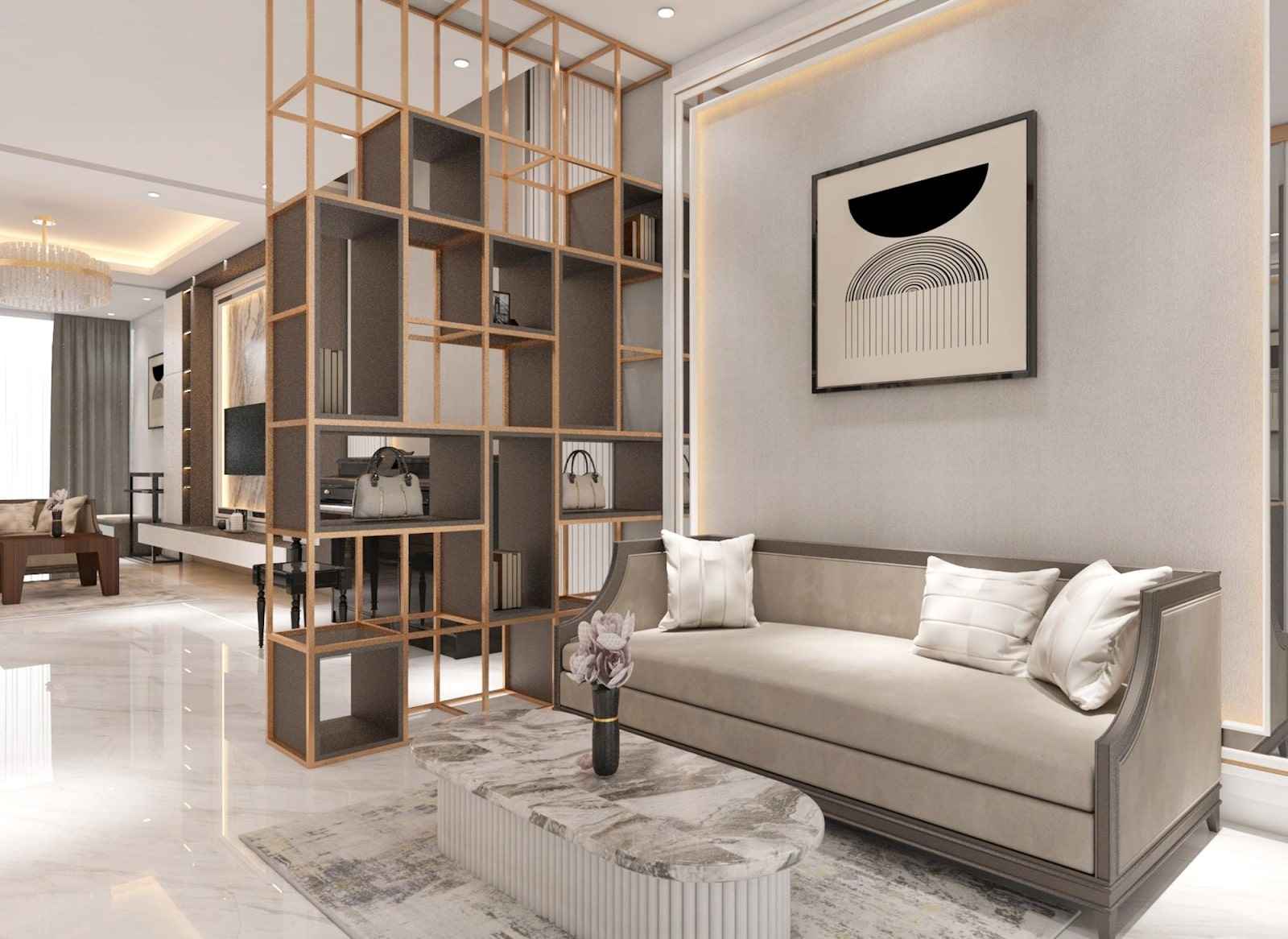
When it comes to hospitality, first impressions matter more than ever. The interior design hotel managers choose can make or break how guests perceive their stay, from the moment they step into the lobby to the comfort of their room.
A well-designed space doesn’t just look attractive—it creates a lasting sense of warmth, professionalism, and luxury that guests remember. In this article, we highlight 20 proven hotel interior design ideas that instantly impress.
Whether you’re refreshing a boutique property or elevating a large chain, these strategies deliver results that enhance guest satisfaction and strengthen your brand image.
1. Biophilic Design / Bringing Nature In

Biophilic design has become a cornerstone of modern hospitality because it taps into people’s innate desire to connect with nature. Incorporating greenery, indoor gardens, natural wood finishes, and abundant natural light helps create a calming atmosphere that instantly puts guests at ease.
Research shows that such elements not only reduce stress levels but also improve overall wellbeing, which is exactly what many travellers are seeking today.
In practice, this could mean adding living walls in the lobby, using reclaimed timber in furniture, or introducing water features that provide both visual appeal and soothing background sounds.
Open-air spaces such as rooftop gardens or courtyards encourage guests to spend more time within the property instead of seeking alternatives outside.
For hotel operators, this design choice is not just aesthetic; it is strategic, as it enhances guest satisfaction and lengthens stays while also reinforcing sustainability credentials.
2. Use of Local & Artisanal Elements
Integrating local craftsmanship into a hotel’s design creates authenticity that no global template can replicate.
Guests are increasingly drawn to hotels that tell a story about their location, and using regional textiles, artisanal furniture, or locally inspired artwork is one of the most effective ways to achieve this. These details transform a stay from being purely functional into a memorable cultural experience.
For instance, a hotel in Singapore might collaborate with local artists to feature bespoke wall murals, or source handmade ceramics from neighbourhood artisans for its restaurants.
Even small touches—such as woven fabrics, rattan furniture, or art pieces reflecting local heritage—can spark conversations and leave a lasting impression.
For hoteliers, investing in these design elements is not only about aesthetics but also about building brand distinction, as guests are more likely to remember and recommend a hotel that feels unique to its surroundings.
3. Quiet Luxury / Understated Elegance
In the world of hospitality, luxury no longer has to shout to be noticed. Quiet luxury is about restraint, precision, and refinement—an approach where every detail is carefully considered but nothing feels excessive.
This style relies on neutral colour palettes, soft textures, and high-quality finishes that create a timeless sense of comfort. Guests experience a refined environment that feels exclusive without being intimidating.
For hotel owners, the appeal of understated elegance lies in its longevity. Unlike overly trendy designs that may look dated within a few years, quiet luxury endures.
Imagine plush fabrics, bespoke lighting fixtures, and subtle architectural features such as curved walls or recessed shelving—all designed to stand the test of time. These touches communicate sophistication while allowing guests to focus on relaxation, creating a space they’ll want to return to again and again.
4. Minimalism and Multi-Functional Spaces
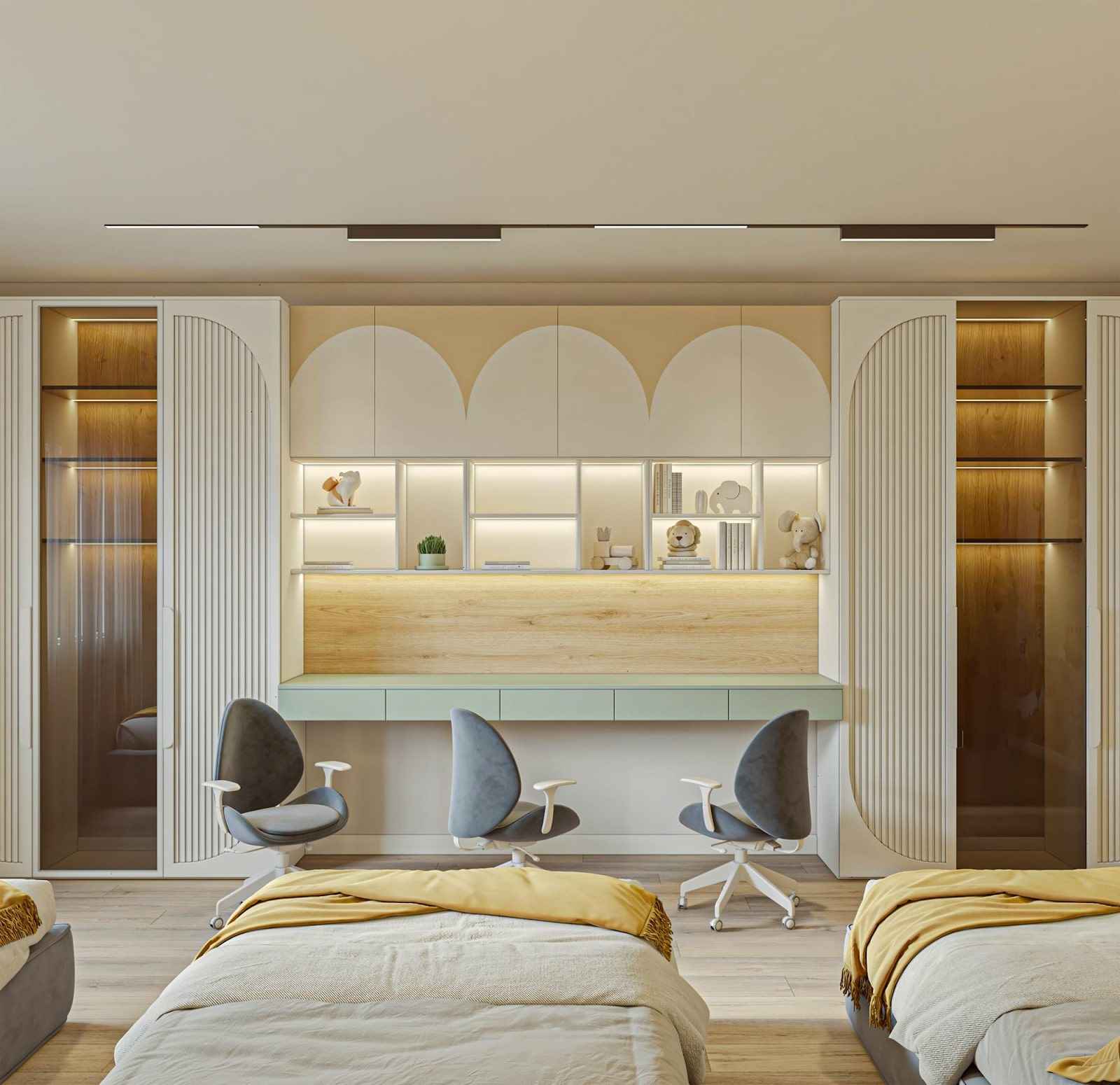
Minimalism in hotel design is about clarity and efficiency, creating environments where every item has purpose.
Guests increasingly appreciate clutter-free rooms with sleek lines and open layouts, as they promote a sense of calm and order. By eliminating unnecessary distractions, minimalism allows the design to highlight what truly matters: comfort, functionality, and a seamless guest experience.
At the same time, space is a premium asset, especially in urban hotels. Multi-functional furniture—such as beds with hidden storage, desks that double as dining tables, or foldaway seating—maximises usability without compromising on aesthetics.
For business travellers, flexible layouts make it easy to transition from work to relaxation, while leisure guests enjoy the comfort of a room that adapts to their needs. This approach not only appeals to modern travellers but also helps hoteliers optimise space efficiency, ultimately adding value to every square metre.
5. Bold / Maximalist Design Accents
Minimalism may have its appeal, but bold design choices can set a hotel apart and create an unforgettable identity.
Maximalist accents—such as vibrant wallpapers, oversized art pieces, or statement furniture—inject character and energy into a space. These elements allow hotels to tell a story through design, showcasing creativity and making each area feel distinctive.
Strategic use of bold accents can also enhance brand recognition. For example, a boutique hotel might introduce eclectic artwork sourced from local galleries or use dramatic lighting installations that become conversation pieces.
When executed thoughtfully, maximalist design doesn’t overwhelm; instead, it creates focal points that delight guests, encourage social media sharing, and reinforce the hotel’s personality.
For owners and operators, this design approach transforms interiors into marketing tools, leaving lasting impressions long after check-out.
6. Sensational / Textured Surfaces
Texture plays a vital role in hotel interiors because it appeals not only to the eye but also to the sense of touch. Surfaces such as exposed brick, natural stone, velvet upholstery, or woven rattan bring depth and contrast to otherwise flat spaces.
By layering different materials, designers create warmth and character that invite guests to engage more deeply with their surroundings.
Textured surfaces are also practical in differentiating zones within a hotel. A textured wall in the lobby can act as a focal feature, while tactile finishes in guest rooms provide comfort and intimacy.
In luxury properties, the addition of bespoke finishes—such as leather panelling or handwoven fabrics—communicates exclusivity and attention to detail. For hoteliers, investing in texture is a strategic decision: it elevates aesthetics, enhances guest comfort, and ensures spaces feel inviting and memorable.
7. Spa-like Bathroom Features
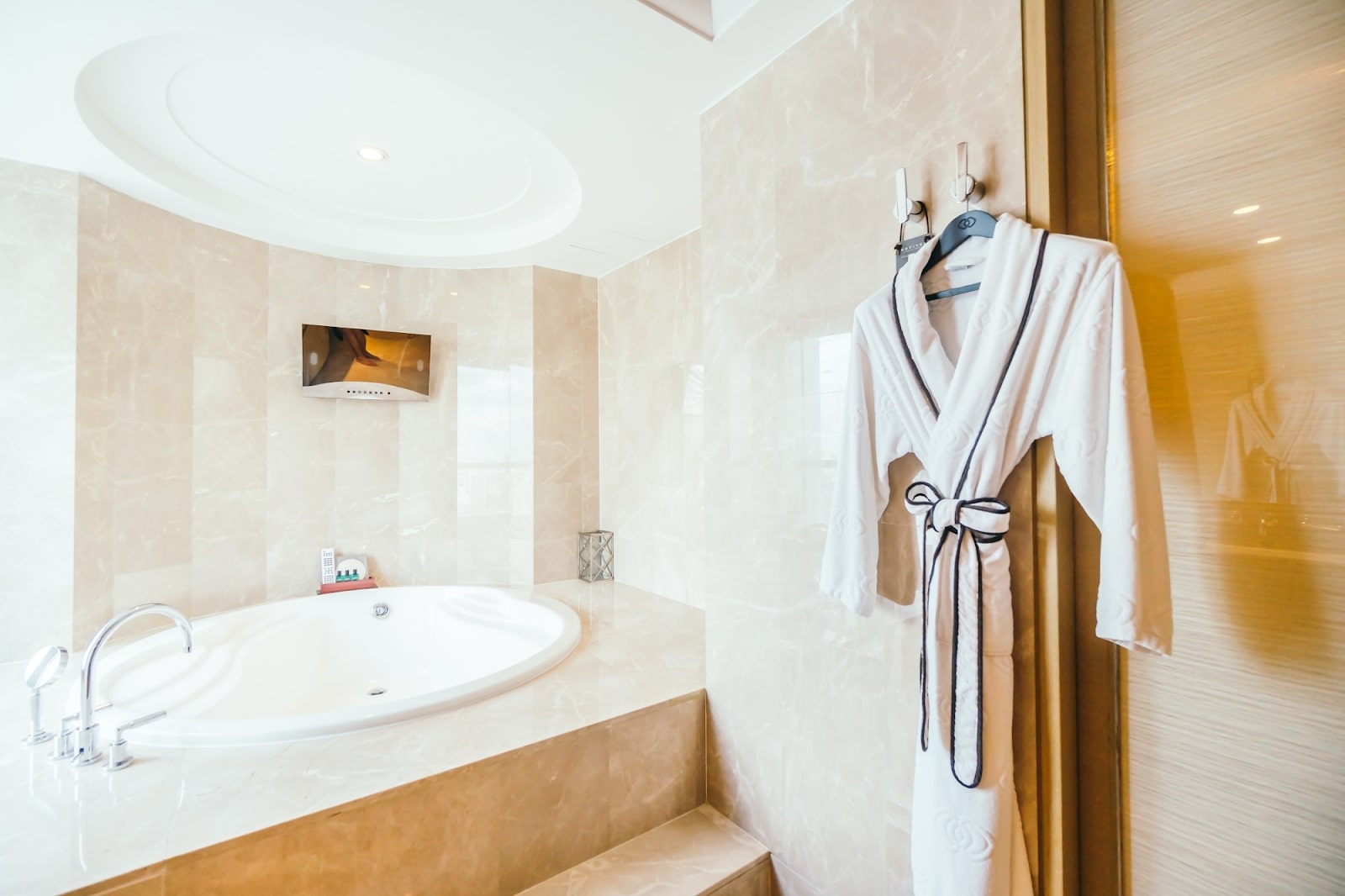
In today’s hospitality landscape, the bathroom is no longer viewed as a purely functional space—it has evolved into a centrepiece of the guest experience.
Modern travellers expect bathrooms that offer comfort and indulgence, akin to a private spa. Features such as rainfall showers, deep soaking tubs, ambient lighting, and high-end finishes elevate these spaces into sanctuaries of relaxation.
Hoteliers are increasingly investing in premium materials like marble, natural stone, and brushed metals to create a sense of timeless elegance. Smart technology, such as heated flooring or touch-controlled mirrors, adds a layer of convenience and luxury that guests appreciate.
By designing spa-like bathrooms, hotels can significantly enhance perceived value, improve guest satisfaction, and justify premium room rates—making these upgrades a strategic business decision rather than just an aesthetic choice.
8. Blurring Indoor-Outdoor Boundaries
Blurring the line between indoors and outdoors is one of the most powerful ways to create an open, refreshing atmosphere within a hotel.
Large floor-to-ceiling windows, open-air lounges, and terraces not only maximise natural light but also frame the surrounding landscape as part of the interior design. This approach gives guests a deeper connection to nature, encouraging relaxation and a sense of escape.
For hotels located in urban hubs like Singapore, rooftop gardens or poolside lounges bring greenery into otherwise dense environments, offering guests a much-needed retreat. Meanwhile, in resorts, outdoor dining areas, open-air spas, or private balconies allow the natural surroundings to take centre stage.
For business owners, this design strategy not only enhances visual appeal but also increases the functionality of spaces, allowing them to serve multiple purposes while leaving a lasting impression on guests.
9. Inclusive / Universal Design
Hotels that embrace inclusive design create spaces where all guests feel comfortable, valued, and welcome. This involves more than simply meeting accessibility regulations—it is about designing with empathy and foresight.
Features such as wider doorways, step-free access, intuitive room layouts, and accessible bathrooms ensure that people of all abilities can navigate the property with ease.
Beyond physical accessibility, universal design also considers sensory needs. Clear signage, well-lit pathways, and acoustically balanced spaces help guests with visual or hearing impairments feel at ease.
For hoteliers and business owners, prioritising inclusivity not only reflects genuine hospitality but also expands the potential customer base. By offering barrier-free experiences, hotels strengthen their reputation, earn loyalty, and show a tangible commitment to serving a diverse audience.
10. Material Mindfulness / Sustainability
Sustainability is no longer an optional feature—it has become an expectation among today’s eco-conscious travellers. Hotels that adopt mindful material choices demonstrate responsibility towards both their guests and the environment.
Recycled wood, reclaimed stone, bamboo, and other eco-friendly finishes bring character to interiors while reducing environmental impact.
Energy-efficient lighting, low-flow fixtures, and non-toxic paints also contribute to healthier spaces for guests and staff alike. Importantly, sustainability doesn’t mean compromising on style—many green materials offer a premium, modern aesthetic that resonates with guests seeking authenticity and wellness-driven stays.
For corporate administrators and hotel owners, investing in sustainable design is both a brand differentiator and a long-term cost saver, appealing to environmentally conscious travellers while reducing operational expenses.
11. Pops of Color
Colour is one of the most powerful tools in interior design, and when used strategically, it can transform a hotel’s atmosphere instantly.
Pops of colour—whether through accent walls, bold furnishings, or curated artwork—add vibrancy without overwhelming the overall aesthetic. These touches energise spaces, inject personality, and create memorable visual moments for guests.
For hoteliers, colour can also be tied to branding, reinforcing identity throughout different areas of the property.
For example, a corporate-focused hotel may use muted, professional tones with bursts of energising blues or greens in common areas, while a lifestyle boutique might favour playful hues to appeal to younger travellers.
The right balance of colour not only uplifts mood but also enhances wayfinding, helping guests subconsciously associate different zones with distinct tones and energy levels.
12. Local Art / Museum-Quality Art
Incorporating art into hotel interiors goes far beyond decorative value—it shapes the cultural and emotional narrative of the property.
By curating local artworks, hotels can immerse guests in the heritage and identity of their location, offering a sense of place that generic décor cannot achieve. Alternatively, museum-quality pieces elevate the prestige of a space, transforming lobbies and lounges into cultural showcases.
Art also creates talking points and opportunities for storytelling. A carefully chosen sculpture in the lobby or a series of regional paintings in guest rooms can leave lasting impressions, sparking conversations and deepening the guest experience.
For hotel owners, investing in art isn’t just an aesthetic choice—it is a strategic branding decision. It reinforces uniqueness, aligns with target demographics, and often encourages guests to share their experiences online, amplifying the hotel’s visibility and reputation.
13. Warm Lighting & Tonal Warmth
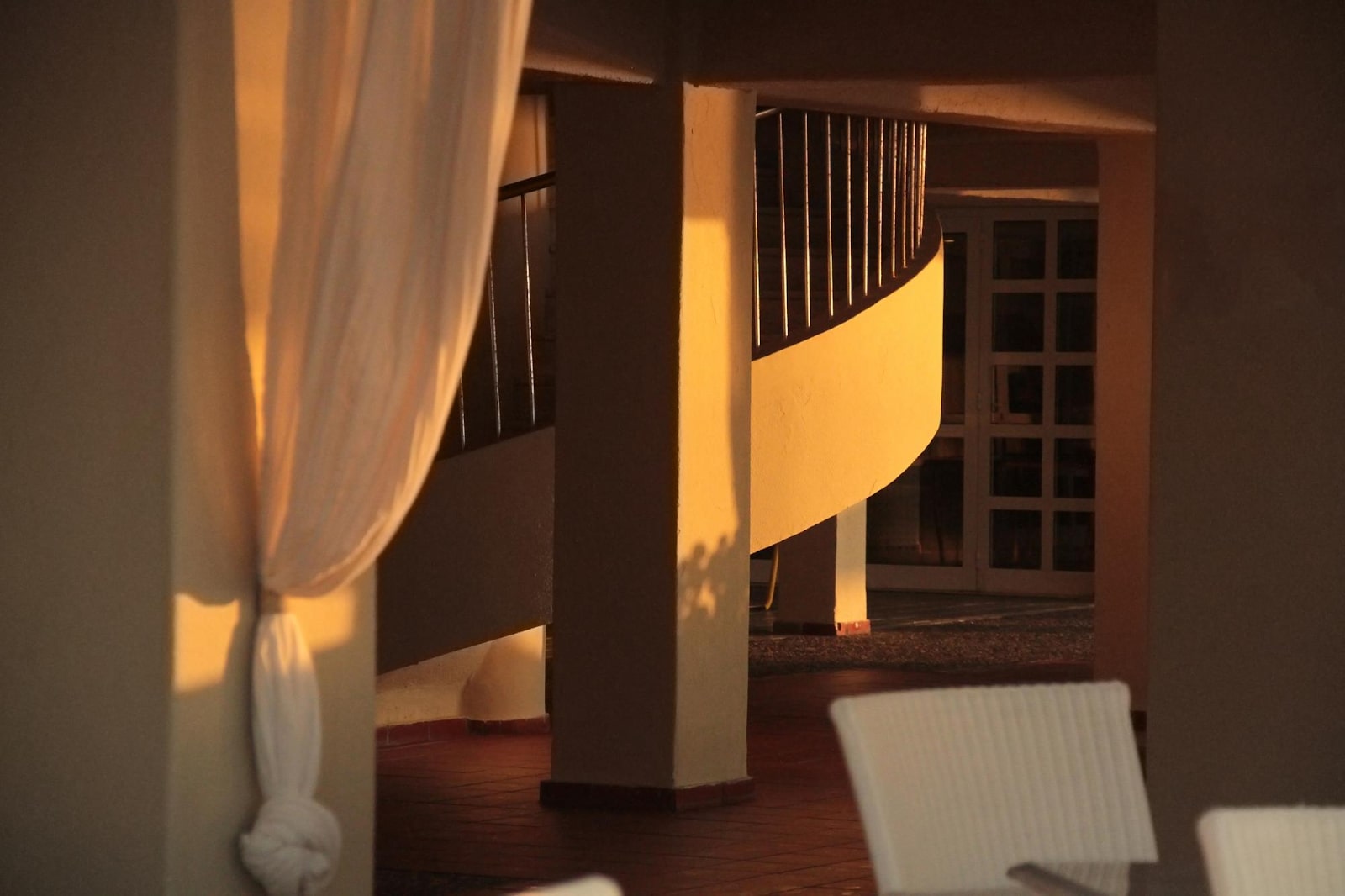
Lighting has a profound impact on the way guests perceive and interact with hotel spaces. Beyond mere functionality, warm-toned lighting paired with earthy or neutral palettes creates a welcoming and calming environment.
Soft, ambient light in lobbies or restaurants encourages guests to linger, while carefully layered lighting in guest rooms helps them transition from work to relaxation with ease.
Attention to lighting design also elevates the sense of luxury. Statement fixtures—such as chandeliers, pendant lamps, or hidden LED strips—add drama without harshness, balancing aesthetics with comfort.
For hoteliers, investing in quality lighting is not just about enhancing the atmosphere; it is about shaping the guest journey, from the first impression at reception to the final moments in their room. Properly designed lighting can reduce stress, promote rest, and ultimately enhance overall satisfaction.
14. Flexibility & Versatility of Common Areas
Today’s hotel common areas have evolved far beyond traditional lounges—they are now dynamic spaces that adapt to the diverse needs of modern travellers.
From co-working hubs equipped with charging stations to casual dining areas that transform into social lounges at night, versatility is key. Flexible layouts and movable furniture allow these areas to transition seamlessly throughout the day.
For business-focused hotels, this approach appeals to corporate travellers seeking spaces where they can work, network, and unwind without leaving the property. For lifestyle and leisure-focused properties, adaptable common areas encourage social connection, fostering a sense of community among guests.
For owners, versatile design is both practical and profitable: it maximises space usage, enhances guest engagement, and ensures the hotel remains relevant in a market where multifunctionality is increasingly valued.
15. Wellness & Wellness-Oriented Spaces
Wellness has become a defining feature of modern hospitality, with guests increasingly seeking hotels that support both physical and mental wellbeing. Dedicated areas for yoga, meditation, and relaxation are no longer considered extras—they are fast becoming essential in creating a holistic guest experience.
Paired with calming design choices such as natural materials, soft lighting, and soothing colour palettes, these spaces encourage guests to slow down, recharge, and feel renewed during their stay.
Wellness design can also extend into unexpected areas, from guest rooms equipped with circadian lighting to menus offering nutritious dining options.
For hotels in competitive urban markets like Singapore, integrating wellness-focused spaces demonstrates an understanding of evolving guest priorities and sets the property apart as forward-thinking.
For business owners, this is more than a lifestyle trend—it is an investment in long-term relevance, boosting guest loyalty while positioning the hotel as a sanctuary of balance amid busy routines.
16. Sensory & Emotional Design / Storytelling
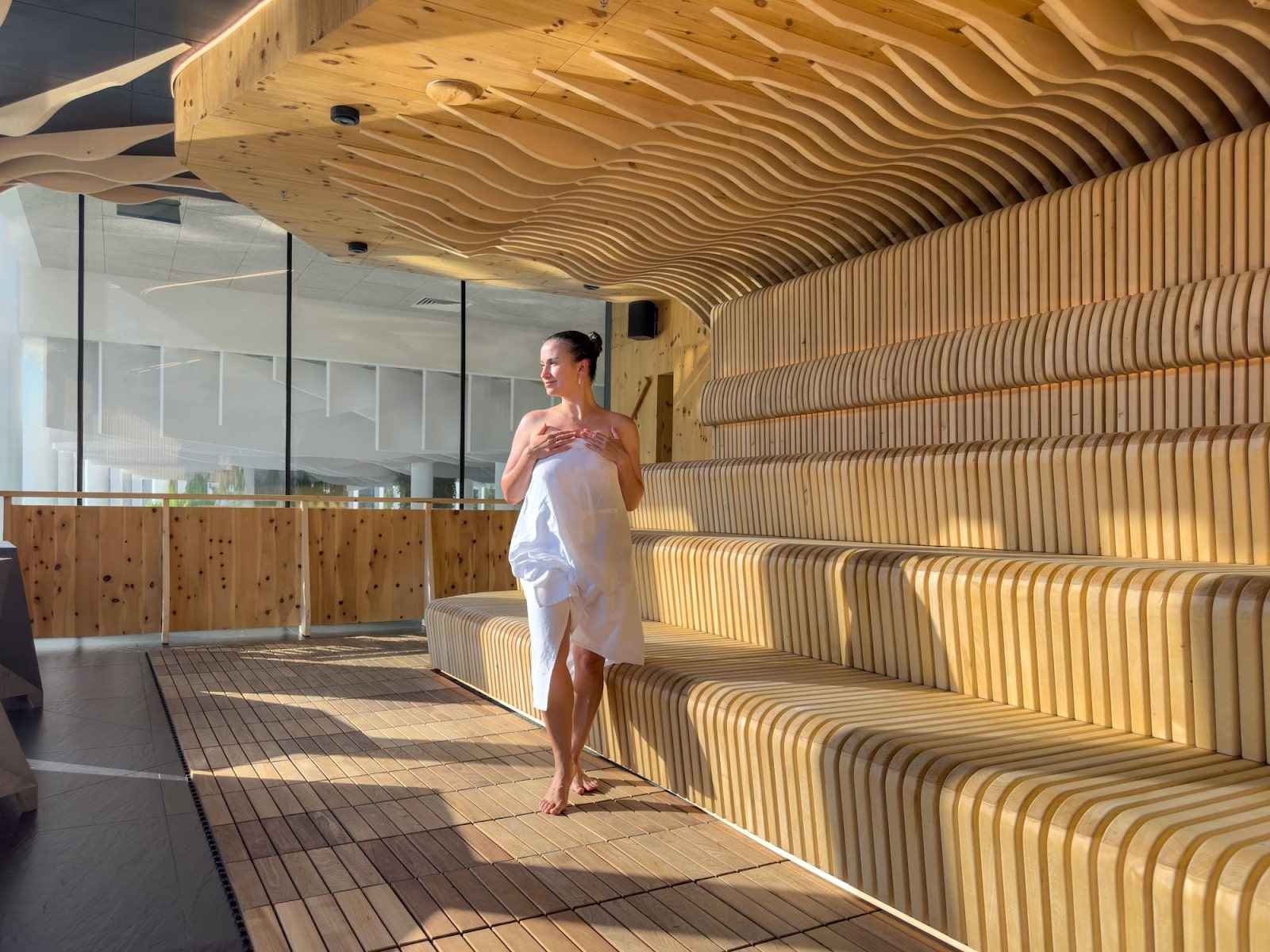
A truly memorable hotel stay goes beyond aesthetics—it engages the senses and stirs emotions. Sensory-driven design uses sight, sound, scent, texture, and even taste to craft experiences that feel immersive and unique.
For instance, ambient music in lobbies, signature fragrances in hallways, and curated tactile materials in furnishings all contribute to a deeper sense of connection and comfort.
Storytelling takes this a step further, embedding narrative into the very fabric of the hotel’s design. A property might reflect local heritage through art and architecture, or convey its brand identity through thematic décor and lighting schemes.
These subtle yet powerful details spark emotional bonds, ensuring guests remember not just the stay, but the story behind it. For hoteliers, this approach creates a powerful differentiator: an experience so distinct and personalised that guests are more likely to return, recommend, and share it.
17. Outdoor Dining / Rooftop Bars / Al Fresco Spaces
Outdoor experiences have become a defining feature of modern hospitality, with guests increasingly seeking spaces that allow them to relax, dine, and socialise in fresh, open-air environments.
Rooftop bars with panoramic views, garden terraces framed by greenery, and al fresco lounges instantly elevate a hotel’s sense of luxury while showcasing its location. These areas provide a unique atmosphere that is difficult to replicate indoors, turning an evening meal or cocktail into a memorable event.
For hotels in urban centres such as Singapore, rooftop dining or sky bars create an appealing escape from the bustling city below, while resorts can enhance their natural surroundings by integrating terraces and beachfront lounges.
Beyond aesthetics, these spaces also increase revenue potential, as they often become signature attractions that draw both guests and local visitors. For business owners, investing in outdoor social spaces adds tangible value, positioning the hotel as both a destination and an experience.
18. Fitness / Movement Spaces Integrated
Wellness-focused travellers now expect fitness to be seamlessly incorporated into their hotel stay, extending far beyond the traditional gym. Modern hotels are designing multi-functional fitness centres equipped with state-of-the-art equipment, offering flexibility for strength training, yoga, and group classes.
Some properties go further by introducing in-room workout features, such as compact fitness kits, streaming workout sessions, or foldable equipment, giving guests ultimate convenience.
Outdoor activity spaces are also gaining traction, with jogging trails, rooftop yoga decks, and even fitness-focused pools catering to those who prefer exercising in the open air. By weaving movement opportunities throughout the property, hotels appeal to a broader demographic of active travellers.
For hoteliers and business owners, integrating fitness into the design is not just a lifestyle offering—it is a competitive advantage that enhances guest satisfaction, builds loyalty, and aligns the property with the growing global focus on health and wellbeing.
19. Statement Furniture / Oversized Beds & Headboards
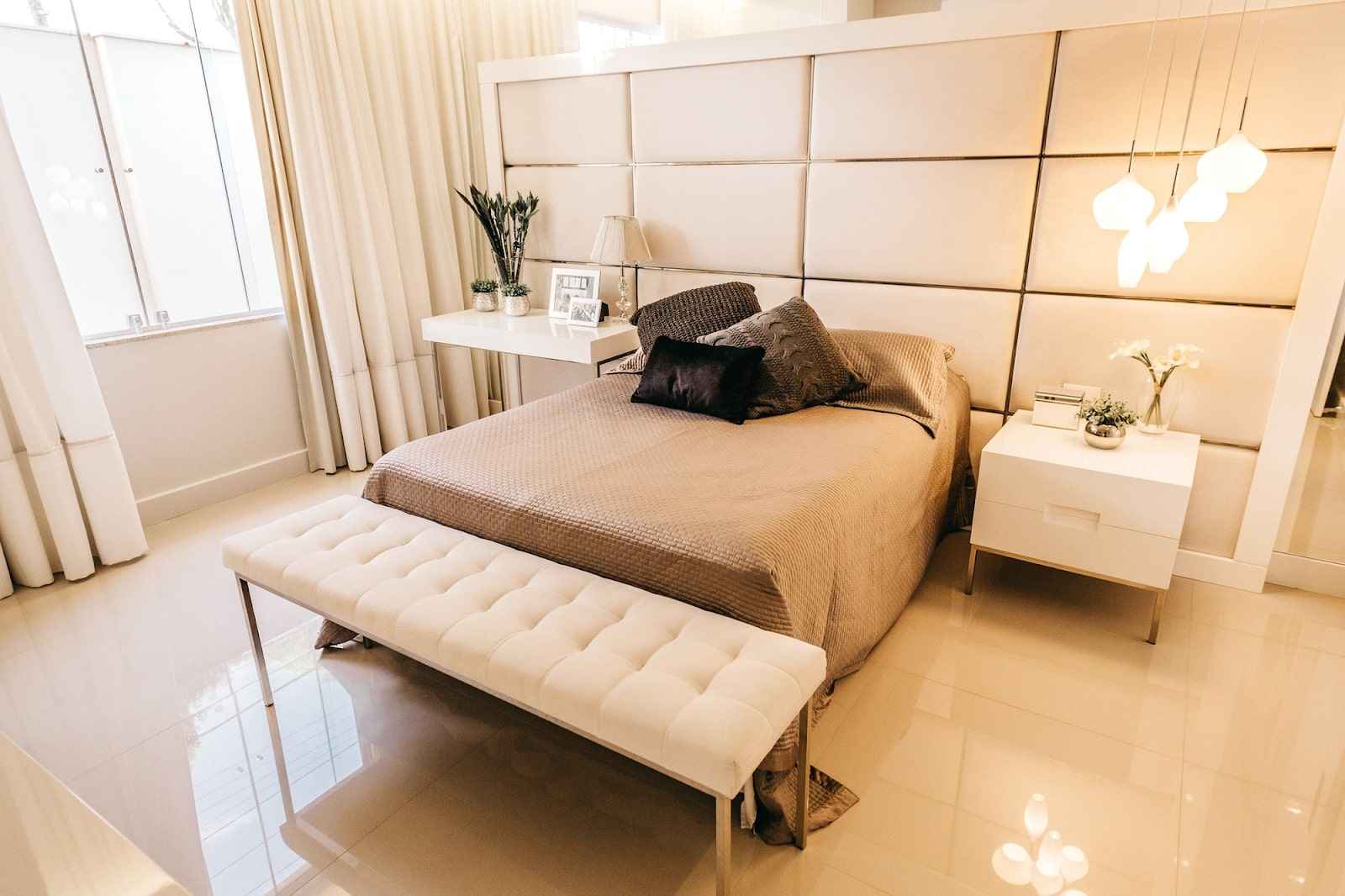
Furniture has the power to transform a hotel room from standard to extraordinary, and bold choices often leave the strongest impression.
Oversized headboards, for example, not only anchor the bed as a focal point but also add a sense of grandeur and comfort. Sculptural chairs, bespoke side tables, or standout lighting fixtures provide personality and elevate the room’s overall aesthetic.
These statement pieces also serve a practical branding function, reinforcing the hotel’s design identity in a way guests can instantly recognise. A unique chair in the lobby or a distinctive bed frame in guest rooms can become part of the hotel’s signature look, remembered long after checkout.
For hoteliers and business owners, investing in statement furniture is a strategic move—it communicates attention to detail, differentiates the property from competitors, and creates Instagram-worthy moments that encourage organic promotion.
20. Textured Glass / Partitions for Privacy + Openness
One of the most innovative trends in hotel design today is the use of textured or frosted glass to balance openness with privacy. These partitions allow natural light to flow freely through a space, maintaining a bright and airy atmosphere, while still offering guests the discretion they expect.
From dividing sleeping and bathroom areas in guest rooms to creating semi-private meeting zones in common areas, textured glass achieves flexibility without sacrificing elegance.
The textures themselves—ribbed, frosted, etched, or patterned—add a layer of sophistication and visual interest. They also complement a wide range of design styles, from modern minimalism to understated luxury.
For hotel owners, the benefit lies in both function and form: partitions maximise space efficiency while keeping interiors stylish and contemporary. This clever use of design not only enhances the guest experience but also positions the property as forward-thinking in its approach to interior innovation.
Conclusion About Hotel Design Ideas
Great hotel interiors do more than fill a space—they shape how guests feel and remember their stay. By applying these 20 hotel interior design ideas, hotels can create environments that inspire trust, delight visitors, and build long-term loyalty.
From biophilic touches that connect travellers to nature to spa-like bathrooms that redefine comfort, these concepts are proven to leave a lasting impression in an increasingly competitive hospitality market.
If you’re looking to bring these ideas to life, consider partnering with Yangs Design Associates, a leading Singapore-based interior design firm established in 2017.
With a team that blends creative vision with hands-on construction expertise, they specialise in crafting tailored solutions that balance style and practicality.
Whether you need design consultancy, build services, or reinstatement works, Yangs Design Associates ensures every project reflects your brand identity and business goals.
Ready to transform your hotel or commercial space into one that truly impresses? Contact Yangs Design Associates today for a free consultation and non-obligatory quotation.
Frequently Asked Questions About Hotel Design Ideas
Does Hotel Interior Design Impact Online Guest Reviews?
Yes, hotel interior design has a strong influence on guest reviews because visitors often comment on ambience, comfort, and visual appeal.
A well-designed space enhances the overall experience and makes guests more likely to leave positive feedback. This not only improves reputation but also attracts new bookings through word of mouth and online platforms.
Can Hotel Interior Design Increase Revenue?
Hotel interior design can directly impact revenue by elevating perceived value, which allows hotels to justify higher room rates.
Stylish and functional spaces encourage longer stays and repeat visits, boosting occupancy rates. Additionally, visually appealing interiors are more shareable on social media, giving hotels free marketing exposure.
How Can Hotels Balance Aesthetics With Functionality?
Hotels can achieve balance by selecting durable, easy-to-maintain materials that still offer elegance. Smart layouts ensure smooth guest flow, while multifunctional furniture maximises usability in smaller spaces. The key is blending beauty with practicality so the design delights guests without compromising efficiency.
Are Colour Schemes Important In Hotel Interior Design?
Yes, colour schemes are crucial because they directly affect mood and perception. Warm tones can create a welcoming, homely feel, while bold hues energise spaces like lobbies or lounges. Choosing the right palette helps align interiors with the hotel’s brand identity and guest expectations.
How Often Should Hotels Update Their Interior Design?
Hotels are recommended to make small updates annually, such as refreshing décor or lighting, to stay modern and appealing.
A full redesign is typically done every 5–7 years to keep up with changing trends and guest expectations. Regular updates also ensure the property maintains a competitive edge in the hospitality market.

